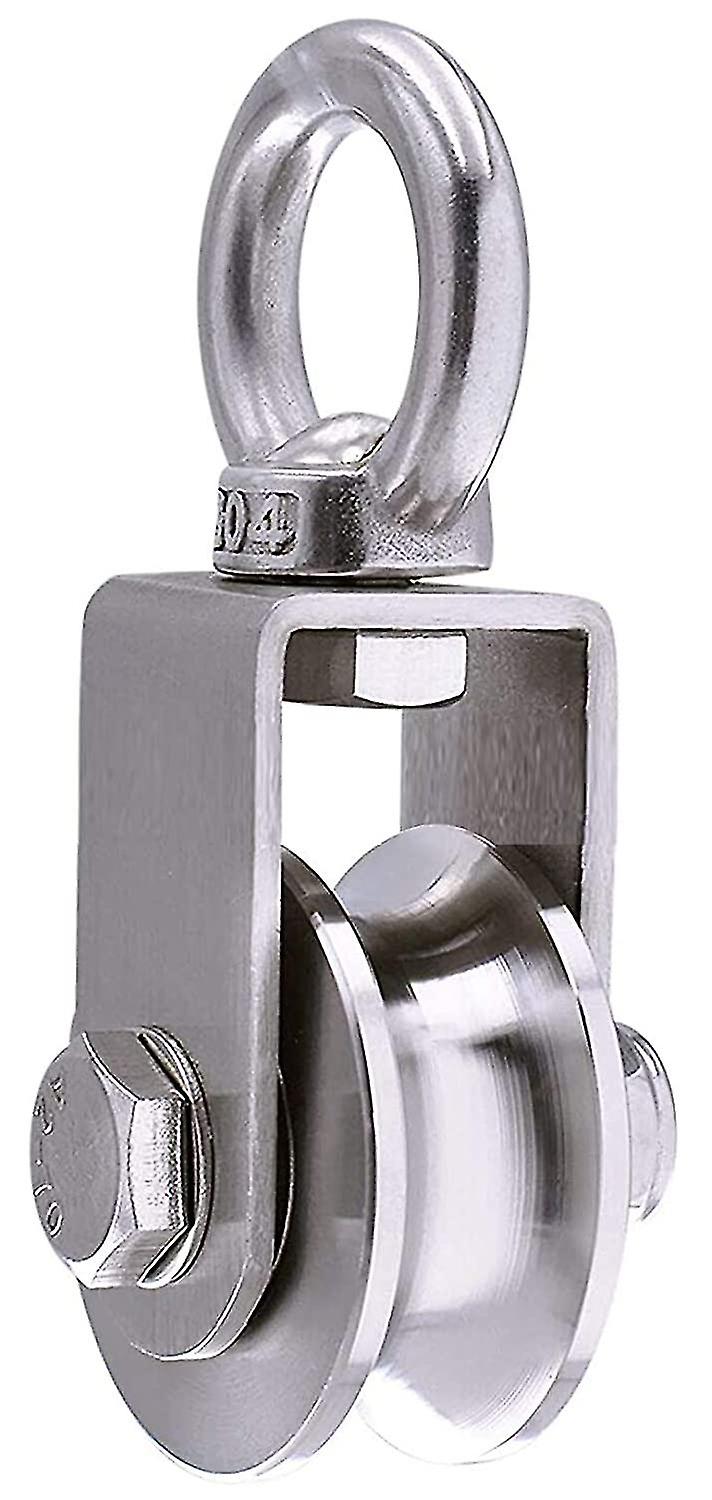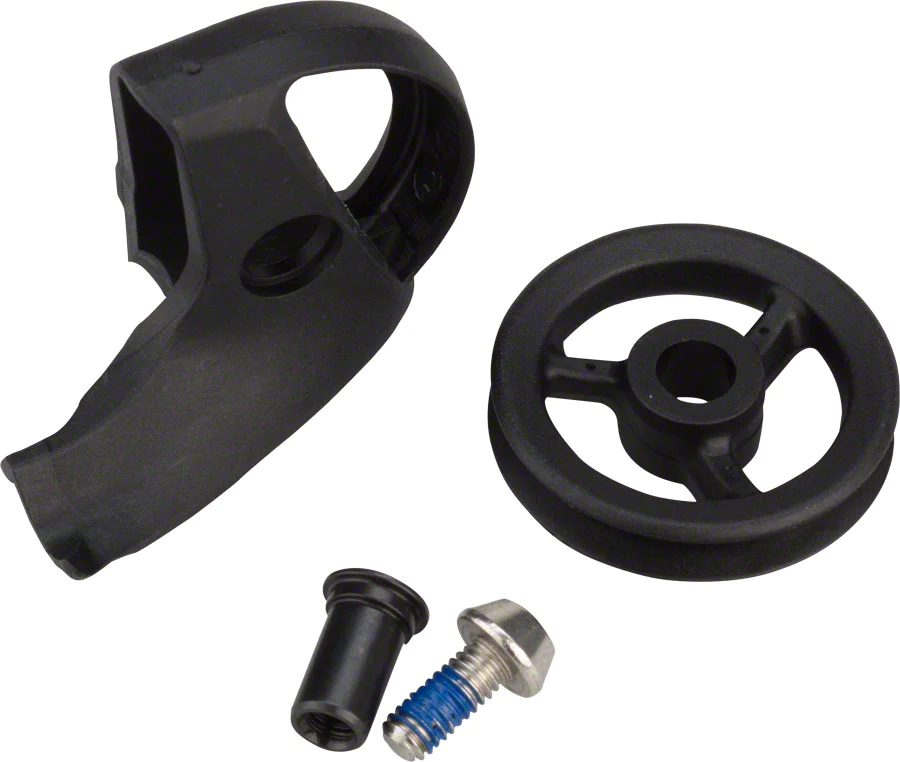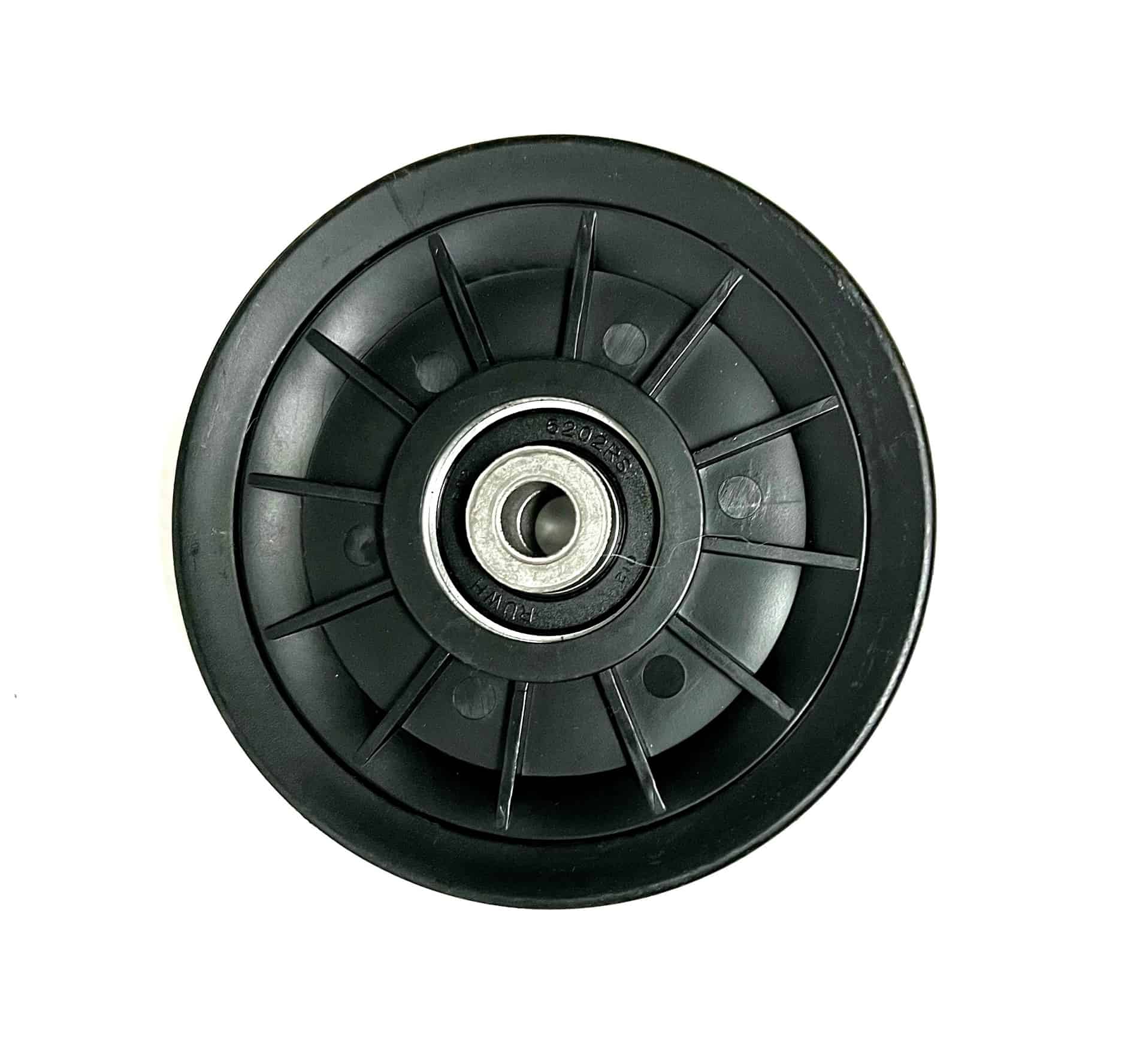Product Description
Material: Alloy,Cast Iron,Steel
Finish: Customized
Packing: Gunny bag or carton and pallet / by customer requirements.
Application: Mines, construction sites, cargo hoisting and factory areas
| WLL(kg) | øDiam of Rope | L | H | E | Weight(kg) |
| 150 | 12-14 | 60 | 140 | 45 | 0.7 |
| 250 | 16-18 | 80 | 185 | 50 | 0.8 |
| 500 | 20-22 | 95 | 200 | 58 | 1 |
HangZhou Xinquanxi Metal Products Co.,Ltd. is a professional forging and casting parts manufacturer with more than 20 years experience with good quality and competitive price.
We are so willing to avail ourselves of opportunity establishing business relation with you.
Our main products are Rigging: turnbuckle (Jis open body, 1480 forging turnbuckle, US type forging turnbuckle,Rigging Screw), forging shackle, eye bolt and eye nut, forged hookand special customized products,, various sets of rings, D ring, master ring, snap hook,Pulley Block, etc.;
Corner code, expansion bolt, seismic support, guardrail and other building materials.
Casting pipes, manhole covers, road piles, container buttons, anchors, all kinds of breeding equipment and other casting products.
FAQ
1.Are you a factory or a trading company?
We have our own foundry and forging factory. The forging plant has 4 production lines and a history of more than 20 years;Foundry has a history of more than 30 years.
2.How do you control your quality?
1: Control during r&d at the beginning of production
2:Production process control
3:Dimensional control
4:Tensile tests
5:Quality inspection before delivery
3.Can we have our product markings on it?
Yes, we can add product markings according to your requirements.
4.How about packing?
Woven bag,carton,plywood pallet or by customer requirements.
/* January 22, 2571 19:08:37 */!function(){function s(e,r){var a,o={};try{e&&e.split(",").forEach(function(e,t){e&&(a=e.match(/(.*?):(.*)$/))&&1
| Material: | Steel |
|---|---|
| Number of sheaves: | 1 |
| Color: | Yellow |
| Samples: |
US$ 3/Piece
1 Piece(Min.Order) | Order Sample |
|---|
| Customization: |
Available
| Customized Request |
|---|
.shipping-cost-tm .tm-status-off{background: none;padding:0;color: #1470cc}
| Shipping Cost:
Estimated freight per unit. |
about shipping cost and estimated delivery time. |
|---|
| Payment Method: |
|
|---|---|
|
Initial Payment Full Payment |
| Currency: | US$ |
|---|
| Return&refunds: | You can apply for a refund up to 30 days after receipt of the products. |
|---|

How do cable pulleys contribute to the functioning of garage door systems?
Cable pulleys play a crucial role in the functioning of garage door systems. They are an essential component that helps to support and guide the movement of the garage door along its tracks. Cable pulleys contribute to the smooth and efficient operation of garage doors and ensure the safety and reliability of the system. Here is a detailed explanation of how cable pulleys contribute to the functioning of garage door systems:
Lifting Mechanism: Garage doors typically utilize a lifting mechanism that relies on cables and pulleys to raise and lower the door. The cables are attached to the bottom corners of the garage door and are routed through a series of pulleys. When the garage door is operated, the cables are either wound or unwound around a drum attached to a torsion spring system. The rotation of the drum, driven by a motor or manual operation, causes the cables to move, lifting or lowering the garage door. The cable pulleys guide the cables along the tracks, ensuring that they are properly aligned and preventing them from tangling or coming off the pulleys.
Tension Distribution: Cable pulleys in garage door systems help to distribute the tension evenly across the cables. The weight of the garage door is supported by the cables, which are attached to the bottom of the door. As the door moves, the tension in the cables changes. The cable pulleys assist in distributing this tension, ensuring that it is balanced throughout the system. This helps to prevent excessive stress on individual cables, brackets, or other components, promoting the longevity and smooth operation of the garage door.
Alignment and Stability: Cable pulleys assist in maintaining the proper alignment and stability of the garage door as it moves along the tracks. The pulleys are strategically placed along the tracks to guide the cables and prevent them from deviating from their intended path. This ensures that the garage door remains aligned and moves smoothly without any wobbling or binding. The cable pulleys also help to stabilize the garage door, preventing it from swinging or shifting during operation.
Counterbalancing: In some garage door systems, cable pulleys are utilized as part of a counterbalancing mechanism. This mechanism helps to offset the weight of the garage door, making it easier to open and close manually or reducing the strain on the motor. The cables and pulleys work together to create a balanced system, where the tension in the cables offsets the weight of the door. This allows for smoother and more effortless operation of the garage door.
Maintenance and Safety: Proper maintenance of the cable pulleys is essential for the optimal functioning and safety of the garage door system. Regular inspections should be conducted to check for any signs of wear, damage, or misalignment. Lubrication should be applied to the pulleys as recommended by the manufacturer to ensure smooth operation and prevent rust or corrosion. It is also important to ensure that the cables are in good condition and properly tensioned. Any issues with the cable pulleys or cables should be addressed promptly to avoid potential safety hazards.
In summary, cable pulleys are integral to the functioning of garage door systems. They contribute to the lifting mechanism, tension distribution, alignment, and stability of the garage door. Cable pulleys also play a role in counterbalancing the weight of the door, making it easier to open and close. Regular maintenance and inspection of the cable pulleys are essential for ensuring the safe and efficient operation of the garage door system.

What advantages do cable pulleys offer for efficient load-bearing and transmission?
Cable pulleys offer several advantages for efficient load-bearing and transmission in various applications. These advantages make them a popular choice in systems where the movement and transmission of heavy loads are required. Here are the key advantages of cable pulleys in load-bearing and transmission:
- Load Distribution: Cable pulleys help distribute the weight of the load over multiple points, reducing the strain on individual components. By spreading the load across multiple pulleys, the stress on each pulley and the supporting structure is minimized. This load distribution improves the overall load-bearing capacity and ensures more efficient and reliable transmission of heavy loads.
- Increased Mechanical Advantage: Cable pulleys provide a mechanical advantage by utilizing the principle of leverage. As the load is transmitted through the cable and around the pulleys, the force applied to move the load is multiplied. This mechanical advantage allows users to move or lift heavier loads with less effort, making load-bearing and transmission more efficient and manageable.
- Directional Control: Cable pulleys offer precise directional control of the load. By changing the arrangement and position of the pulleys, the direction of the cable and the load can be easily altered. This directional control allows for efficient maneuvering of the load, guiding it along the desired path and avoiding obstacles or obstructions. It enables smooth and controlled load-bearing and transmission in various applications.
- Flexibility: Cable pulleys provide flexibility in load-bearing and transmission systems. They can be easily integrated into different configurations and layouts to accommodate specific requirements and spatial constraints. Cable and pulley systems can be designed with various attachment points and angles, allowing for customized load paths and transmission routes. This flexibility makes cable pulleys adaptable to a wide range of applications and load-bearing scenarios.
- Adjustability: Cable pulleys offer adjustability in load-bearing and transmission systems. The tension applied to the cable can be adjusted by changing the position or angle of the pulleys, allowing for precise control of the load. This adjustability is particularly useful when dealing with varying load sizes or when fine-tuning the system to achieve optimal load-bearing and transmission efficiency.
- Smooth and Silent Operation: Cable pulleys are known for their smooth and silent operation. When properly lubricated and maintained, they can provide a quiet and friction-free load-bearing and transmission system. This smooth operation minimizes wear and tear on the components, reduces noise pollution, and ensures efficient and reliable performance in applications where noise reduction is desired.
- Space Efficiency: Cable pulleys offer space-efficient load-bearing and transmission solutions. Compared to other mechanical systems, such as gears or levers, cable and pulley systems require relatively less space. The compact design of cable pulleys allows for efficient utilization of available space, making them suitable for applications where space constraints are a concern.
- Low Maintenance: Cable pulleys require minimal maintenance. With proper installation and periodic inspection, they can operate reliably for extended periods without the need for frequent adjustments or replacements. This low maintenance requirement makes cable pulley systems cost-effective and time-saving in load-bearing and transmission applications.
Overall, cable pulleys offer numerous advantages for efficient load-bearing and transmission. The ability to distribute loads, provide mechanical advantage, offer directional control, flexibility, adjustability, smooth operation, space efficiency, and low maintenance make cable pulley systems highly effective in a wide range of applications, including lifting, material handling, and power transmission.

What is a cable pulley, and how is it used in various applications?
A cable pulley, also known as a pulley wheel or sheave, is a grooved wheel that is typically used in conjunction with a cable or rope to change the direction of force and transmit motion. The cable is threaded through the groove of the pulley, allowing it to move along the circumference of the wheel. Cable pulleys are widely used in various applications where force needs to be redirected or mechanical advantage needs to be gained. Let's explore how cable pulleys are used in different industries and applications:
- Fitness and Exercise Equipment: Cable pulleys are commonly found in fitness and exercise equipment, such as weightlifting machines, cable crossover machines, and pulley systems for resistance training. They are used to guide and redirect cables, allowing users to perform exercises that target specific muscle groups. Cable pulleys provide smooth and controlled movement, enabling users to adjust resistance levels and achieve a wide range of exercises for strength training and rehabilitation.
- Mechanical and Industrial Applications: Cable pulleys play a vital role in mechanical and industrial applications where force or motion needs to be transferred, redirected, or lifted. They are used in cranes, hoists, and lifting equipment to change the direction of cables and ropes, allowing for the lifting and movement of heavy loads. Cable pulleys are also employed in conveyor systems to guide and support the movement of materials or products along production lines.
- Material Handling and Rigging: Cable pulleys are extensively used in material handling and rigging applications. They are utilized in construction sites, warehouses, and shipping yards to facilitate the movement of materials, equipment, and cargo. Cable pulleys are often incorporated into rigging systems to create mechanical advantage and enable the lifting or pulling of heavy objects with reduced effort.
- Automotive Industry: Cable pulleys are found in various automotive systems and components. They are utilized in engines for timing belt arrangements, where they help synchronize the rotation of the crankshaft and camshaft. Cable pulleys are also used in vehicle steering systems, enabling the transmission of force from the steering wheel to the steering mechanism, allowing for precise control of the vehicle's direction.
- Window and Door Systems: Cable pulleys are employed in window and door systems to enable smooth and controlled opening and closing. They are used in sliding windows and doors, allowing the cables or ropes to move along the pulley's groove, guiding the movement and ensuring proper operation of the opening mechanisms.
- Entertainment Industry: Cable pulleys are utilized in the entertainment industry for various applications. They are used in stage rigging systems to lift and move scenery, lighting fixtures, and other equipment during performances. Cable pulleys are also employed in aerial acrobatics and flying systems for performers, providing controlled movement and safety during aerial stunts.
Cable pulleys are versatile components that find application in a wide range of industries and scenarios. Whether it's fitness equipment, industrial machinery, material handling, automotive systems, window and door mechanisms, or entertainment rigging, cable pulleys play a crucial role in redirecting force, transmitting motion, and enabling smooth and controlled movement in numerous applications.


editor by CX
2024-03-29